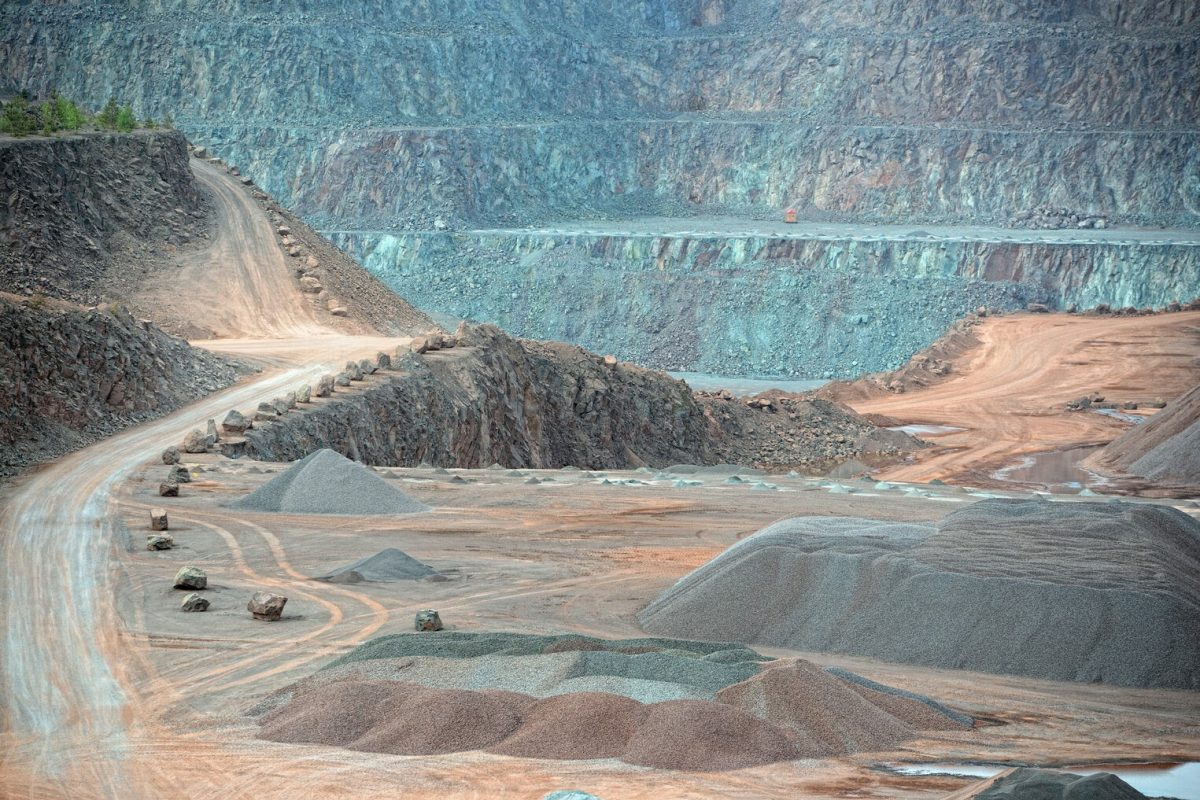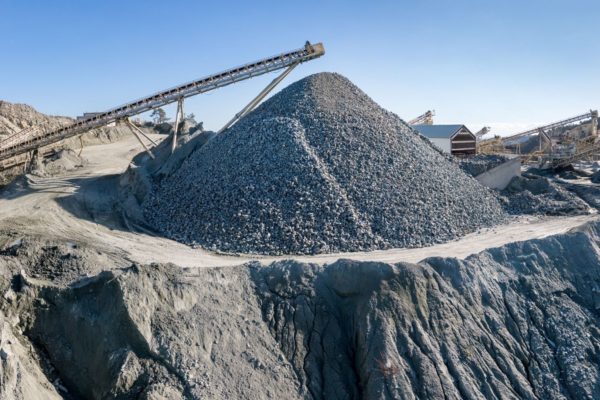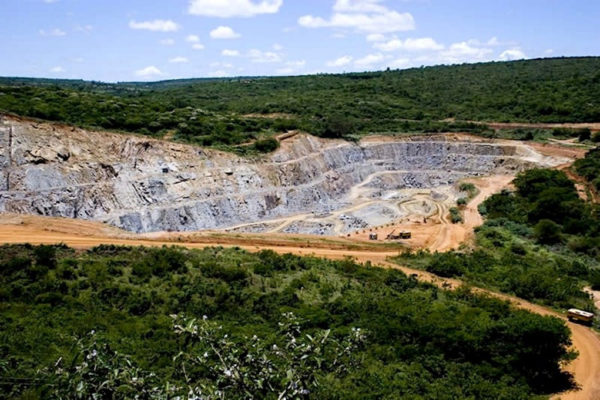The COVID-19 pandemic has had a range of effects on commodity markets. Isolated outbreaks and government-mandated shutdowns have harmed company operations, and demand for many commodities is low, with lower near-term demand on the horizon. This article examines how vast the mining industry in Canada truly is and how the long-term implications of COVID-19 have affected the industry.
Impact of COVID-19 on mining
The pandemic of COVID-19 has had an immediate impact on the world economy, affecting all industries, including mining. The new set of problems facing the mining industry will have a greater impact on some sites than others.
During Covid, mining had been and still is classified a vital service in Ontario, Quebec, British Columbia, and the Northwest Territories of Canada. However, operations are only permitted under strict safety restrictions. Travel restrictions have been given special attention in the Northwest Territory, and workers are allowed to travel in and out of the territory.
Quebec issued declarations demanding 14 days of self-isolation after returning from a trip outside the province. Workers in remote work camps and local, isolated villages are being protected. Unfortunately, it has been reported that many environmental laws have also been waived for mining sites such as Alberta’s oil sands sector, which has invested over C$243 billion (US$180 billion) and is one of the world’s largest energy projects. As vaccination progresses, quarantines have been modified for mobility passes associated with vaccines and requests for PCR tests to ensure that people who enter the workplace are not carriers of COVID-19. This has allowed a certain level of “normalization” of the activities.
Throughout the pandemic, non-essential tasks have been postponed to considerably limit the number of persons working on-site, including those performing low-risk environmental compliance inspections, to reduce infection risks. Likewise, all the functions that allow it have been made remote, giving rise to teleworking in the mining industry. Mining has managed to reduce personnel costs at the site and maintained its productivity levels, which has been reflected in productive improvements and better financial results of many operations.
Canadian mining industry size and growth
Mining is one of Canada’s most vital economic industries. The majority of Canada’s metal and mining industry focuses on:
- Iron Ore Mining (96.0%)
- Copper, Nickel, Lead & Zinc Mining (89.6%)
- Mineral & Phosphate Mining (85.3%)
How vast are Canada’s mining activities?
Nearly 200 mines and 6,500 sand, gravel, and stone quarries in Canada produce over 60 different minerals and metals. In 2019, the total value of mineral production in Canada was $48.2 billion. With a value of $10.3 billion, gold was the most valuable commodity produced in Canada in 2019.
Canadian cities also serve as regional hubs and supply chains for specialized equipment and service providers that support exploration, mining, and related activities in the metals sector. Large cities, such as Toronto and Vancouver, are also known as global hubs for mining, resource exploration, finance, and legal services. In 2019, the exploration and mining industry in Canada had access to more than 3,700 firms offering technical, legal, financial, accounting, environmental, and other services.
How has the mining climate changed over the last decade?
- Canada
Between 2015 and 2020, the Mining Sector’s revenue fell -6.7 % each year on average, to $115.5 billion, making it Canada’s 13th fastest growing sector during the last five years. Meanwhile, the number of enterprises in the Canadian mining sector decreased by -5.5 % per year on average, to 10,669 businesses. During this period, employment in the Canadian mining sector fell -9.8% each year on average, to 140,187 total employees.
- Chile
The mining sector’s contribution to Chile’s GDP was about 8,6% in 2015 and represented around 12,5% in 2020. This represents more than half of the country’s total exports (source). The mining industry generates about 200k jobs in the country. Chile’s production ranks as one of the highest in the world for different metals such as silver, gold and molybdenum. However, copper is by far the most important metal in the country’s economy. As the largest producer and exporter of copper in the world, Chile produced 5,773 thousand metric tons in 2020, which accounts for 28.5% of world production (source).
- Peru
Private investment in the mining sector of the country has risen in the last decade and has placed Peru as the second most important destination for mining investments in Latin America. During the first half of the decade, investments had a boost of US $ 21 billion and then rebounded again at the start of 2017, boosting US $ 8.3 billion copper projects to date. As a result, Peru has increased its copper production fivefold in the last two decades from approximately half a million to two and a half million metric tons of fine copper. It is now the second largest copper producer in the world (source).
Where is the main mining industry in Canada?
If you were to take a tour across Canada’s major mining sites, this is what you would see:
- In the Yukon you would witness the most recent gold rush where the country’s major gold mining industry is taking place.
- Then, traveling to the Northwest Territories you would see the world’s third-greatest producer of diamonds by value.
- Gold and iron ore mining in Nunavut provide a peek of the territory’s resource potential.
- Significant iron ore and nickel can be discovered in Newfoundland and Labrador.
- New Brunswick’s smelting capacity is infamous across Canada, Prince Edward Island’s quarrying operations are the largest in the country, and Nova Scotia’s zinc and resurgent gold mining industries would rival any other in the world.
- The mining sector of Quebec is the most diverse in Canada, including goods such as iron ore, zinc, gold, and diamonds.
- The major products of Ontario, Canada’s largest minerals and metals producer, are gold, copper, and nickel, whereas Manitoba is the country’s leading zinc producer.
- You’d be entering a world-leading potash and uranium mining region in Saskatchewan, while metallurgical coal is produced in Alberta (an irreplaceable ingredient for steel making).
- British Columbia is Canada’s greatest copper producer.
How big is the mining industry globally?
Several industries throughout the world rely on the subsurface supply of mineral commodities. In 2020, the top 40 global mining businesses, which account for the vast majority of the industry’s revenue, generated $656 billion in sales. The mining industry’s net profit margin has declined from 25% in 2010 to 11% in 2020.
Iron ore, coal, potassium, and copper are the most exploited commodities in terms of volume. The top three coal-producing countries are China, Indonesia, and India. China is also the world’s third-largest iron ore producer. Indeed, China is fast becoming the world’s top mining country for a variety of commodities, particularly rare earths, for which China produced roughly 58 % of worldwide output in 2020. In addition, China is the world’s biggest producer of gold.
The minerals with the best commercial prospects for the coming years are those related to electromobility, the decarbonization of the economy and advanced electronics, such as copper, gold, lithium, rare metals and graphene.
Why is the mining industry growing?
The global mining industry growth rate is predicted to increase at a compound annual growth rate (CAGR) of 12.4% from $1641.67 billion in 2020 to $1845.55 billion in 2021.
According to mining industry trends in 2021, the increase is primarily due to companies reorganizing their operations and recovering from the impact of COVID-19. At a CAGR of 7%, the market is estimated to reach $2427.85 billion in 2025.
Sustainable mining development
We must assure the long-term development of our resources if we are to maintain a competitive advantage for the industry. We can benefit from sustainable development if we:
- entice investors
- avert project setbacks
- improve technical progress
- strengthen local and international partnerships
In the context of mineral development, sustainable development encompasses concerns such as community acceptability of mineral development projects, environmental sustainability, and social and economic benefits to communities and society.
Here are some ways in which the mining industry can become more sustainable and eco-friendly:
Dust Monitoring
Because of the nature of size reduction and segregation processes, blasting, transporting, grinding, and crushing minerals are the primary contributors of dust in the air. This dust is harmful to workers, the environment, and local wildlife.
ABCDust offers its clients a dust-monitoring service that uses EPA near-reference PM10-2.5 measurement technologies to provide a consistent assessment of dust levels in various environmental conditions and mining production levels (Ton/h) We implement dust control measures to measure PM10-2.5 dust levels generated by mining operations.
Here are some of the features of our dust monitoring solution:
- For PM 10, 5, 4, 2.5, and 1 particles, multichannel dust levels up to 4,000 mg/m3 are continually monitored.
- Gravimetric samples are used to describe and quantify mg/m3 dust emissions.
- Modeling of dust emissions using a variety of parameters (winds, humidity, production, type of material, etc.).
- Solutions for dust control are suggested (maintenance, dry, fine mist, dust collectors, additives, etc.).
- Before and after deployment, improvement options are reviewed.
- Report on emissions both before and after the measure is implemented.
Dust Suppression
ABC Dust has combined DMS® high-performance dust suppression solutions and soil stabilizers with electronically controlled irrigation equipment, georeferenced dust and road friction monitoring systems, and roughness georeferenced monitoring systems to create DMS® high-performance dust suppression solutions and soil stabilizers. As a result, an entirely new dust suppression technology has been developed.
Our products are precisely distributed when and where they are needed, resulting in increased productivity, sustainability, and safety. DMS products provide dust suppression capabilities, improved soil stabilization, water conservation, shorter braking distances, and minimal maintenance costs. To assist with dust reduction, the following DMS® vehicles are available:
- DMS-DS: Control of dust on roadways. The DMS-DS® dust suppressor can handle up to 600 tonnes of freight and is suited for mining routes, haul highways, and high mountains.
- DMS-EB: The DMS-EB® is a green vehicle that traps particles and enhances road and soil stability.
- DMS – DS 80: This is a low-cost dust suppressor and soil stabilizer that is also chloride-free and healthy for the environment. It thrives in a wide range of soil types, although silty, low-water-retention soils generate better yields.
- DMS-TDS: This is a non-ionic dust suppressor designed for continuous belt lines on loading fronts and/or high-frequency material transport systems.
You can achieve a dust reduction of 95 to 99 % by using ABCDust’s products and services, potentially saving lives and benefiting the environment.
Vegetation and Mulch
To protect exposed soil from wind and water erosion, mulch and plants can be used. As a result, air pollution will be reduced, and health concerns will be reduced. When used correctly, this technique can prevent wind erosion by up to 80%. In building projects, hydro-seeding is a popular method of dust reduction.




